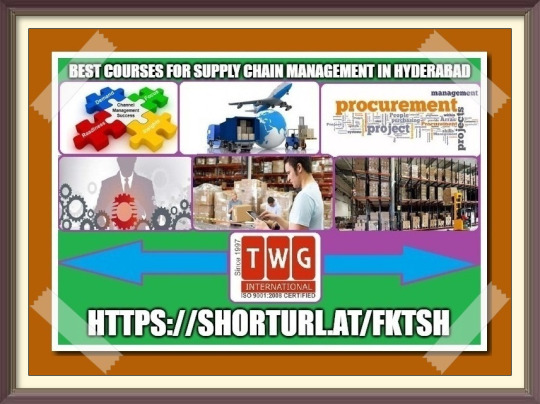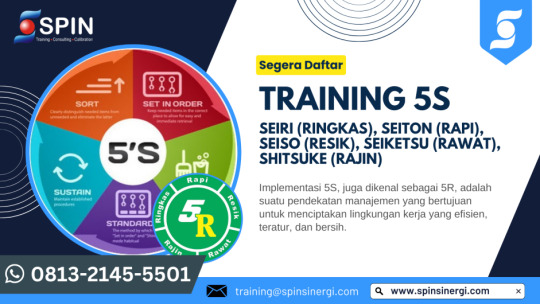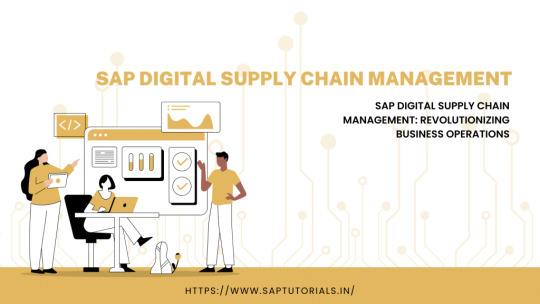#Supply Chain Management (SCM)
Text
How Transportation Management (TM) Operates in SAP
Transportation the board is the help of effective supply chain operations, guaranteeing merchandise move consistently from creation offices to dissemination focuses to end shoppers. The ability to optimize transportation processes is essential for staying competitive and meeting customer demands in today's fast-paced business environment. For businesses of all sizes, SAP Transportation Management (SAP TM) is a robust solution that streamlines and improves transportation operations. We'll look at how SAP TM works, its key features, benefits, real-world success stories, and more in this comprehensive guide.

Introduction to SAP Transportation Management
At its center, SAP TM fills in as a concentrated stage for dealing with all parts of transportation processes, from arranging and execution to observing and settlement. Consider SAP TM your strategies war room, giving ongoing perceivability and command over your whole transportation organization. Businesses can streamline freight payment and settlement processes, optimize routes, select the most cost-effective carriers, track shipments in transit, and more with SAP TM.
Planning and Optimization with SAP TM
The advanced planning and optimization capabilities of SAP TM are one of its most distinctive features. SAP TM aids businesses in developing cost-effective and efficient transportation plans by utilizing sophisticated algorithms and real-time data analysis. Whether it's deciding the most productive courses, combining shipments to lessen void space, or choosing the best transporters for explicit paths, SAP TM enables organizations to pursue information driven choices that drive effectiveness and cost reserve funds.
Execution and Monitoring in SAP TM
When transportation plans are set up, SAP TM works with consistent execution and checking of shipments. Coordinated with SAP's ERP system and other pertinent modules, SAP TM robotizes request creation, offering, and following of shipments on the way. Businesses can proactively identify and address issues with this real-time visibility into transportation processes, ensuring on-time delivery and customer satisfaction.
Collaboration with Partners
Collaboration is essential to success in the world that is now interconnected. With external partners like carriers, suppliers, and third-party logistics providers, SAP TM makes it easy to work together. Businesses can communicate with partners, share important information, and track performance metrics in real time through a centralized platform. Stronger relationships are built through this collaborative approach, which also increases supply chain efficiency as a whole.
Freight Payment and Settlement
Overseeing cargo installment and settlement cycles can be complicated and tedious. By automating the processes of invoicing, auditing, and settlement, SAP TM makes this task easier. By smoothing out monetary exchanges and guaranteeing precision, SAP TM assists organizations with decreasing authoritative above and further develop income, at last prompting more prominent monetary solidness and productivity.
Integration with Other SAP Modules
One of the critical qualities of SAP TM is its consistent joining with other SAP modules, like Distribution center Administration (WM) and Supply Chain Management (SCM). Through this integration, data can be shared between different functions, giving a complete picture of logistics operations and encouraging departments to work together better. For optimal supply chain performance, SAP TM seamlessly integrates with other SAP modules for order fulfillment, demand planning, or supply chain performance.
Benefits of SAP TM Implementation
There are numerous advantages to implementing SAP TM. SAP TM delivers tangible outcomes for businesses, including cost savings, operational efficiency, and increased customer satisfaction. By improving transportation processes, organizations can lessen delivering costs, limit lead times, and upgrade in general supply chain agility. In addition, the centralized nature of SAP TM ensures improved visibility and control over transportation operations, enabling businesses to respond quickly to shifting market dynamics and make educated decisions.
Real-world Success Stories
Various organizations across different businesses have encountered huge advantages from carrying out SAP TM. SAP TM has helped businesses of all sizes, from Fortune 500 corporations to small and medium-sized businesses, achieve remarkable results. There are a lot of case studies that show how adopting SAP TM has led to cost savings, improved processes, and competitive advantages. The compelling proof of SAP TM's transformative power in transportation management comes from these success stories.
Challenges and Considerations
Despite the numerous advantages offered by SAP TM, it is essential to acknowledge the implementation difficulties and factors. Implementing SAP TM necessitates careful planning, resources, and stakeholder support for issues ranging from data integration to change management. Notwithstanding, with the right procedure, backing, and venture, these difficulties can be survived, making ready for long haul achievement and seriousness in the present unique business scene.
Conclusion
In conclusion, the way businesses manage their transportation processes has been fundamentally altered by SAP Transportation Management. SAP TM gives businesses the tools they need to stay ahead of the competition, improve efficiency, and optimize their logistics operations by utilizing cutting-edge technologies, real-time data analysis, and collaborative tools. Embracing SAP TM is not only a strategic choice as supply chains become increasingly digitalized, but it is also a requirement for businesses wishing to thrive in the modern era of commerce.
FAQs about SAP Transportation Management
Q1: What is SAP Transportation Management?
A1: SAP Transportation Management (SAP TM) is an extensive programming arrangement intended to smooth out and upgrade transportation tasks for organizations, everything being equal.
Q2: How does SAP TM optimize transportation planning?
A2: SAP TM optimizes transportation planning by analyzing a variety of factors, such as shipment volumes, transport modes, and routes, to produce optimized transportation plans that maximize efficiency and reduce costs.
Q3: Can SAP TM integrate with other systems?
A3: Yes, SAP TM is made to work seamlessly with other systems, like the ERP system, the Warehouse Management (WM), and Supply Chain Management (SCM) modules, all of which are made by SAP.
Q4: What are the benefits of implementing SAP TM?
A4: Putting SAP TM into use has a lot of advantages, like saving money, making operations more efficient, making customers happier, and having more control and visibility over transportation operations.
Q5: Are there any real-world success stories of SAP TM implementation?
A5: Indeed, numerous organizations across different enterprises have encountered huge advantages from carrying out SAP TM, including cost investment funds, process upgrades, and upper hands.
#Transportation Management#supply chain#SAP TM#SAP Transportation Management (SAP TM)#SAP Transportation Management#ERP system#Supply Chain Management (SCM)#Supply Chain Management
2 notes
·
View notes
Text
Logistics & Supply Chain Management Courses

Logistics & Supply Chain Management Courses
0 notes
Text
Supply Chain Management System Software
Are you looking for comprehensive Supply Chain Management (SCM) system software? Presenting NYGGS SCM Software that is ideal for small and medium-sized organisations in India. The software solution offered by the company includes cost management, stock-keeping unit (SKU) monitoring, allocation of resources, warehousing, and more. This cloud-based software is also straightforward to operate, with an intuitive design that makes tracking and managing your supply chain activities a breeze.
#supply chain management system#best supply chain management software#best supply chain management software in india#scm software in gurgaon
0 notes
Text
Role of Information Systems in Supply Chain Management
Supply chain management has many moving parts, requiring systems and tools that help streamline processes, improve efficiency and strengthen accuracy. The role of information systems in supply chain management is to help businesses manage supply chains through scheduling, sourcing, supplier management, and data analytics.

These systems help organizations oversee the key elements of the supply chain, from resource development to logistics. They can help organizations keep track of different participants in the supply chain, including suppliers, warehouses, transport companies, retailers, manufacturers, and customers.
The primary role of information systems in supply chain management is to ensure businesses have access to the information they need to make the right business decisions. For example, operational visibility allows companies to assess fluctuations and anomalies in their business. By leveraging data in their internal systems (and public data), businesses can act intelligently on identifying and solving supply chain issues before they become big problems.
Information systems can also improve decision-making throughout the supply chain process by helping decision-makers to:
Be aware of what’s happening at key touchpoints in the supply chain management process (operational visibility)
Analyze information through visual dashboards and easy-to-understand data using analytics and emerging technologies (for example, machine learning)
Find opportunities to improve the performance of the supply chain, which can lead to improved profitability and better customer experiences
Role of Finance in Supply Chain Management
The role of finance in supply chain management is vital. Finance and accounting functions bring stability and flexibility to supply chain management by helping suppliers and buyers in the following ways:
Ensuring payment predictability and transparency. Using financial and accounting principles, organizations ensure a business has strong working capital and meets regulations and tax requirements.
Extending payment terms. By offering flexible payment terms for items, finance departments at suppliers can help buyers optimize their cash flows, helping to strengthen the buyer-supplier relationship.
Ensuring that taxes are Indirect taxation can be a complex process — tax is paid by different entities throughout the supply chain process. The taxes paid are reflected in the final cost of the product, but it is invisible to the customer thanks to finance’s involvement in the process.
Decreasing Finance can play a key role in developing strategies that help other functions, such as customer service, to meet customers goals at the least total cost possible.
Improving Firms rely on the role of finance in the supply chain to help control and reduce costs, resulting in opportunities to improve margins.
The role of finance in supply chain management is evolving to help organizations explore supply chain opportunities. This includes using advanced technology that shares financial and transaction data. This visibility into financial data across all entities in a supply chain can help in the creation of sophisticated financing programs focused on optimizing the balance sheet requirements and liquidity of all entities involved in the supply chain.
Finance also collaborates with other functions in an organization, including legal, marketing, information technology and operations, to enhance operational value and minimize risk.
For mor information visit Aniisolution
0 notes
Text
Supply Chain Management (SCM): Project Success & Challenges
Supply Chain Management (SCM) is a critical component in the realm of project management, wielding a profound influence on the seamless orchestration of materials, information, and resources from inception to the ultimate consumer delivery. It plays an integral role in synchronizing diverse activities such as procurement, production, logistics, and distribution to optimize overall efficiency and…

View On WordPress
#Communication and Collaboration#Cost Management#Cybersecurity#Demand Variability#Globalization#project#quality control#Resource Planning#Risk#Risk Mitigation#SCM#Supply Chain Management#Technology Integration
0 notes
Text
Top 5 advantages of Supply chain management.
Supply chain management(SCM) optimises the product creation and flow of raw materials sourcing to production, manufacturing, wholesaler and final customers. It will help to manage the whole supply chain process in your company.
SCM is the integration of the planning and executive process required to manage the raw materials, information and financial activities they include demand planning, sourcing, production, inventory management, order management and delivery products.
Advantages of Supply chain management (SCM)
Better supply chain visibility
If you are using supply chain management software that helps to the visibility into your business and they are watching their whole details. Company All employees review their work and see the plan for the supply.
Improvements in quality control
Through supply chain management software company employees are aware of the company's products. However, they are improving product quality, because everyone is sharing their idea about the products and making them easy to access for all employees. Company employees can connect with each department and discuss about the products. That will help in distributors of products.

Improvements in cash flow
Company distribution channels are available to take direct cash from their different customers. Morever, they take all the work in less time. That will be more beneficial for the SCM process and make easy work more efficient.
Reduced inventory and overhead cost
Companies are increasing the data-driven about the stocks minimising the overhead cost and reducing the access. However, they are implementing the customer relationship between the employees and the products. SCM Software manages the planning, shipping order, packing and distributor channels and decreases the inventory stocks.
Better collaboration with suppliers
If they work together on one platform that means, they are ready to collabrate with different suppliers and make an effective decision for the business. Which helps companies work speedy and companies are clarified about the work.
Last words
Supply chain management software helps to plan to distribution of products to customers. This software can make your whole plan in their systems and make an effective and accurate business. SCM Software can make quick and effective decisions about the products. That software is conducted as a help to supply process of the company.
Delight ERP provides you with Supply chain management software according to your business requirements. However, they customize the software.
Hope this information will help you..!
Thank you for reading.
0 notes
Text
The global supply chain management (SCM) software market is expected to reach a value of USD 48.586.3 million by 2030, growing at a CAGR of 11.1% from 2023 to 2030.
#supply chain management (SCM) software market#supply chain management (SCM) software market sjhare#supply chain management (SCM) software market size
0 notes
Text
Training Implementasi 5S, Call: 0813-2145-5501
Training Implementasi 5S
Training 5S Implementation (Implementasi 5S / 5R) – Training 5S Implementation – Lima faktor yang menentukan keberhasilan perusahaan yaitu Manusia, Modal, Mesin, Material dan Metode. 5R sangat sulit untuk dilaksanakan dengan benar. 5R memerlukan kegigihan dan kebulatan tekad, usaha yang terus-menerus dan kesanggupan untuk melihat apa yang penting dan memberikan perhatian…

View On WordPress
#Inhouse Training 5S#Inhouse Training Ekspor Impor#Inhouse Training Export Import#Inhouse Training Export Import Management#Inhouse Training GMP#Inhouse Training Good Manufacturing Practices#Inhouse Training Implementasi 5S#Inhouse Training Import Export#Inhouse Training Management Exim#Inhouse Training Manajemen Ekspor Impor#Inhouse Training Pengelolaan Gudang#Inhouse Training PPIC#Inhouse Training Production Planning & Inventory Control#Inhouse Training Quality Control#Inhouse Training SCM#Inhouse Training Six Sigma#Inhouse Training Supply Chain Management#Jadwal Pelatihan Ekspor Impor#Jadwal Pelatihan Export Import#Jadwal Pelatihan Export Import Management#Jadwal Pelatihan Import Export#Jadwal Pelatihan Management Exim#Jadwal Pelatihan Manajemen Ekspor Impor#Jadwal Training Ekspor Impor#Jadwal Training Export Import#Jadwal Training Export Import Management#Jadwal Training Import Export#Jadwal Training Management Exim#Jadwal Training Manajemen Ekspor Impor#Lembaga Pelatihan Ekspor Impor
0 notes
Text
SAP Supply Chain Management
SAP’s ERP software makes a difference in streamlining operations, enhancing proficiency, and encouraging data-driven decision-making for companies of all sizes over diverse businesses. With its comprehensive SAP Supply Chain Management solution, it optimizes and streamlines the whole process.

1 note
·
View note
Text
Mastering the Art of Supply Chain Management
In the intricate web of modern commerce, efficient supply chain management stands as the sentinel of success. Supply Chain Management (SCM) has transcended from a mere logistical function to an art form, orchestrating the seamless flow of goods, information, and finances across a complex network. In this article, we will embark on a journey to unravel the nuances of SCM, exploring its pivotal role in today's dynamic business landscape.
The Foundation: Understanding Supply Chain Management
At its core, Supply Chain Management represents the strategic coordination of all supply chain activities to optimize processes, minimize costs, and maximize value. It encompasses a spectrum of operations, from procurement and production to distribution and logistics. A harmonious SCM system aligns every facet of the supply chain to the overarching organizational goals.
The Pillars of Effective SCM
Procurement Excellence: The procurement phase marks the inception of Supply Chain Management. Procurement specialists navigate supplier relationships, sourcing strategies, and negotiations to secure the highest quality materials at the best possible prices.
Efficient Production Planning: Effective production planning within SCM necessitates the synchronization of production schedules, resource allocation, and inventory management. Lean manufacturing principles and cutting-edge technologies are pivotal here.
Flawless Logistics Management: The logistical labyrinth of modern commerce demands an intricate dance of transportation, warehousing, and inventory control. Supply Chain Management optimizes these processes for cost-efficiency and rapid response.
Distribution Strategies: Strategic distribution management entails the selection of distribution channels, strategic partnerships, and inventory positioning. It ensures products reach customers promptly while minimizing overheads.
The Digital Revolution in SCM
In recent years, technology has catalyzed a revolution in SCM. Concepts like Big Data analytics, the Internet of Things (IoT), and blockchain have empowered Supply Chain Management professionals with real-time insights and greater transparency. This technological transformation has streamlined decision-making, enhanced forecasting accuracy, and reduced operational risks.
Challenges in Modern SCM
Globalization: Expanding into global markets introduces complexities like currency fluctuations, diverse regulations, and cultural nuances. SCM must adapt to navigate this dynamic landscape.
Sustainability: Growing environmental concerns have thrust sustainability into the Supply Chain Management spotlight. Organizations are now expected to ensure that their supply chain practices are eco-friendly and ethically sound.
Resilience and Risk Management: In an era of unforeseen disruptions, SCM is tasked with building resilience. It must develop strategies to mitigate risks, whether they stem from geopolitical tensions, natural disasters, or supply chain interruptions.
Future Trends in SCM
The future of Supply Chain Management promises exciting developments. Autonomous logistics, predictive analytics, and AI-driven supply chain decision-making are on the horizon. These innovations will further optimize operations, reduce costs, and enhance customer experiences.
Conclusion: Mastering the Symphony of Supply Chain Management
In the grand symphony of commerce, SCM conducts the intricate interplay of supply and demand. It's not merely a logistical function but an artful fusion of strategy, technology, and adaptability. By mastering the art of supply chain management, organizations can achieve operational excellence, customer satisfaction, and a competitive edge in the ever-evolving business landscape.
Stay Tuned for More Insights
Thank you for embarking on this journey through the world of supply chain management with us. Stay tuned for more enlightening articles that delve deeper into the ever-evolving realms of business, strategy, and innovation.
0 notes
Text
Best Courses for Supply Chain Management in Hyderabad
0 notes
Text
Simple Methods to Integrate Supply Chain Management Software into Your Business
To integrate SCM Software into your business, assess your specific business needs and goals, go for scalability and flexibility, and look for platforms that offer customization options. Let's discover the importance of a Supply Chain Management System in any industry. Learn how to choose the best system and integrate it into your business efficiently.
#supply chain management software#supply chain management system#scm software#supply chain management software in gurgaon
0 notes
Text
#supply chain management course#scm#PD 02: SCM Supply Chain Management Course [ CILT International Diploma]#CILT International Diploma#CILT#HPA#High Performance Academy
0 notes
Text
The Power of SAP Digital Supply Chain Management in Transforming Supply Chain Operations
In the fast-paced business environment of today, organizations face a variety of challenges when trying to manage their supply chains efficiently. Innovative software called SAP Digital Supply Chain Management (DSCM) makes use of recent technological and digital advancements to increase the efficiency of supply networks. In this post, we’ll examine the SAP DSCM concept, its key elements, and how…

View On WordPress
#DSCM#sap for supply chain#sap software for supply chain management#sap supply chain management modules#sap supply chain solutions#SCM#supply chain inventory management software#supply chain sap#what is sap supply chain
1 note
·
View note